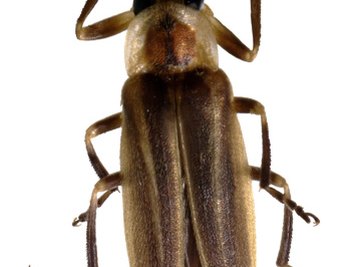
Like all other insects, the firefly has a head, a thorax and an abdomen that is part of how it is defined. The firefly has wings as well, but it is the abdomen that makes it special. Its internal biology features several specialized parts that allow both sexes to glow at night to attract a mate.
Parts Common to All Insects
Some features of an insect anatomy are always the same. The head is the sensory unit of the body, and it is made up of connecting plates. The antennae, long protrusions from the head, enable the insect to sense the world around it. An insect also has a thorax with six legs, which is the muscle center of the body. The firefly also has two pair of wing parts. One is an external shell, while the pair underneath is for flying. And, it has a unique abdomen that emits light chemically.
Chemical parts
There are two primary chemicals in the firefly's abdomen that produce light, called luciferin and luciferase. According to fireflies.org, "luciferin is heat-resistant, and it glows under the right conditions. Luciferase is an enzyme that triggers light emission. ATP, a chemical within the firefly’s body, converts to energy and initiates the glow." Additionally, nitric acid must be produced by the firefly internally to initiate the process.
Specialized cells
In the "lantern" area of the firefly's abdomen, several specialized cells are present that allow the insect to create its light without producing any heat. There are layers of reflective cells and an important single layer of photocytes in rings around air tubes. Inside the photocytes are specialized structures called peroxisomes, which is where the chemicals luciferin, luciferase and ATP combine to produce the characteristic glow.
Tracheoles and Mitochondria
Oxygen is an important part of the process of lighting up the firefly's body, but they do not have lungs to draw in the oxygen. Instead, tiny tubes called tracheoles transport oxygen to the photocytes. This can only happen when the mitochondria, or energy-producing structures in cells, have absorbed enough nitric acid to keep them occupied, which allows the oxygen to pass through and start the chemical process of lighting the insect.
References
About the Author
Sean Kotz has been writing professionally since 1988 and is a regular columnist for the Roanoke Times. He has also written for the Blue Ridge Business Journal, The Roanoker, 50 Plus, and Prehistoric Times, among others. He holds a Master of Arts in literature from Virginia Tech.
Photo Credits
Brand X Pictures/Brand X Pictures/Getty Images
